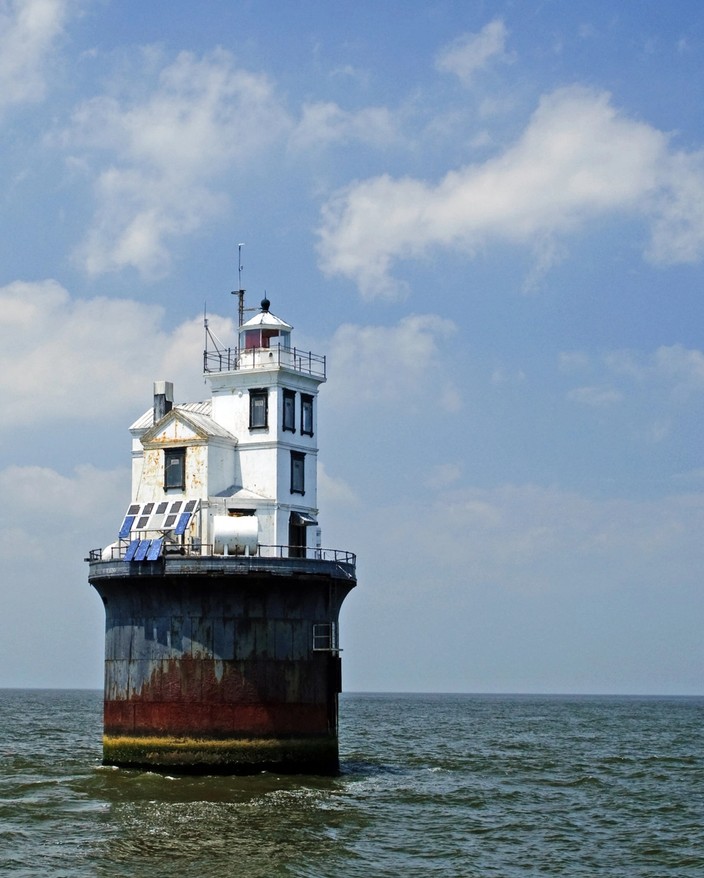Fourteen Foot Bank Lighthouse

Fourteen Foot Bank Lighthouse, Delaware (Photo by James Hatcher, CC BY-NC-ND)
Stumbled upon a picture of this wonderful building in an old book. It‘s called the Fourteen Foot Bank Lighthouse and sits in the Delaware Bay. Lighthouses are usually pretty fascinating, but there‘s something special about a house just sitting on a pillar out in the ocean.
Some interesting stories from the link above:
James C. Jones was appointed the first head keeper of the lighthouse and served in this capacity until his passing in 1895. In June 1911, Assistant Keeper Lewis F. Robinson committed suicide at Fourteen Foot Bank by drinking carbolic acid. His companion at the lighthouse heard Robinson cry for help after downing the liquid, but all he could do was watch Robinson die in agony, after expressing remorse for his act. The previous December, Keeper Robinson broke his ankle at the lighthouse and had to wait two weeks before being able to get off the station and receive medical attention. A newspaper article reporting his death conjectured that “the sufferings he endured while ill affected his mind and that led him to commit the rash deed.”
Fourteen Foot Bank was the first assignment in the lengthy career of Chester P. Joseph. During the winter of 1917-1918, Keeper Joseph was stranded at the station for three straight months, as heavy ice floes prevented any relief from reaching the lighthouse. Joseph and the other marooned keeper busied themselves with every conceivable task, but life soon became monotonous. The ice fields that occasionally banged against the foundation did provide some excitement, as they would cause any unsecured item on a table or countertop to slowly migrate to the edge and fall off. After the ordeal, Joseph confessed, “I don’t believe I ever was as tired looking at one person in my life.”
On November 15, 1931, a party of three female high school teachers and five young men from Millville, New Jersey became lost in their motorboat during a thick fog. After exhausting their supply of food and water and nearly their fuel, the group made it to Fourteen Foot Bank Lighthouse the following day by following the sound of its foghorn and was welcomed aboard by its keepers. An intensive search for the missing boat had been launched by the Coast Guard, but it wasn’t until a relief keeper was brought to the station on November 17, that news of the group’s whereabouts made it to shore. Later on the 17th, a Coast Guard vessel took the group off the lighthouse, and with their motorboat in tow, returned them to Millville.